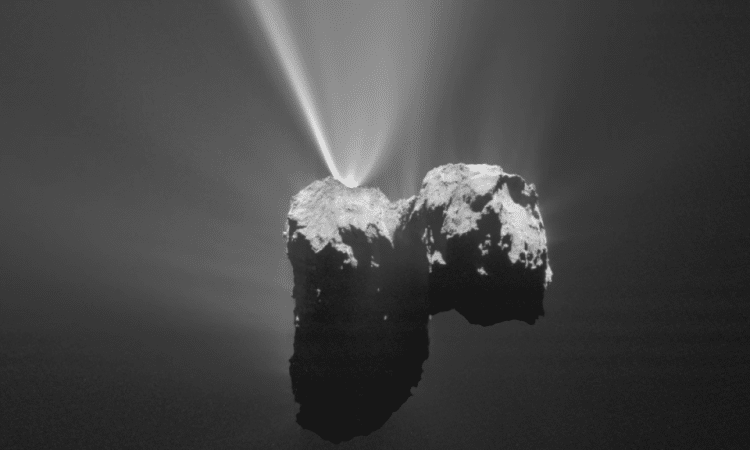
It’s snowing on a comet! In reality, the following animation is a series of images taken by ESA’s Rosetta space probe, taken from a distance of about 13 km from cometa 67/P Chuyurmov-Gerasimenko. As the spacecraft moves around the comet, we see the landscape change: in the background we can see the stars and that is not snow but ice crystals and dust rising from the surface. It looks like something from an old movie, but it is absolutely real. Enjoy:
Advertisement
Insights into comets
There is a disc-shaped band called Kuiper belt (theorized by the astronomer Gerard Kuiper in 1951) of icy bodies beyond , where a “population” of comets orbits the Sun in the realm of . These icy objects occasionally, pushed by gravity, get closer to the Sun, becoming the so-called “short-period comets“. They take less than 200 years to orbit our star: in many cases their orbit is predictable because it is already known. Less predictable are “long-period comets“, many of which come from a region called Clouds of Oort located approximately 100,000 astronomical units from the Sun (i.e. approximately 100,000 times the distance between Earth – Sun). They can take up to 30 million years to complete one orbit around our star.
Characteristics of comets
Each comet has a small frozen part called nucleusno more than a few kilometers wide. It contains frozen blocks, frozen gases and dust fragments. A comet it warms up as it approaches the Sun and develop a chioma. The heat causes the ice of the comet to transform into gas and therefore the coma grows up to hundreds of thousands of kilometres. The solar wind it blows away dust and gas from the coma, forming a long, bright tail. Comets actually develop two tails: one of dust and one of ions (gas). Most orbit at a safe distance from the Sun: for example the perigee of Halley’s comet is 89 million kilometers from our star. However, some comets “crash” directly into the Sun or come so close that they break up and evaporate. In short, the jewels of our Solar System.
Read more:

